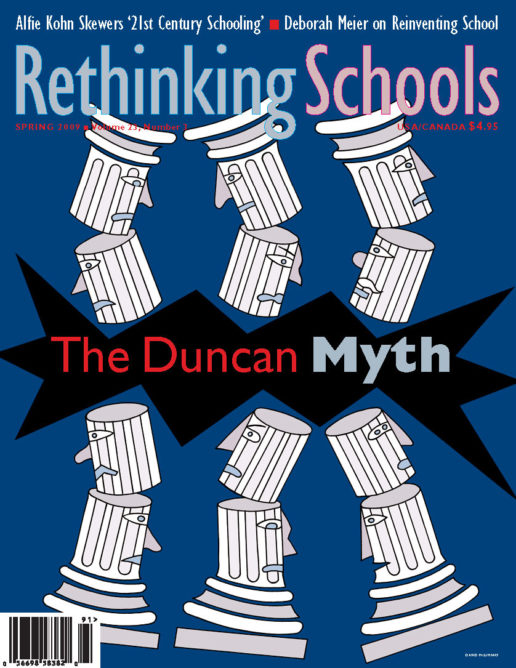Preview of Article:
Teaching Objection
How textbooks distort and lie about conscientious objection to World War II
In August 1941, Selective Service drafted my grandfather to serve as a combatant in World War II. My grandfather was one of 43,000 drafted men who refused to bear arms for the United States government and claimed conscientious objector status during the war. The government responded to these war resisters by placing them in alternative service or in prison.
I became aware at an early age that schools often present an uncomplicated and incomplete account of United States history. On the one hand, my academic courses, buttressed by the popular media, taught me a simple story about World War II as a conflict of “good versus evil.” In this story, U.S. citizens unanimously support their government’s “good war” against fascism. On the other hand, my grandfather taught me about the struggles of conscientious objectors and the contention surrounding the government’s involvement in the war. Although conscientious objectors held diverse views about violence, war, and social change, many argued that violence is fundamentally immoral and an ineffectual means for creating a peaceful and just world. They agreed with A.J. Muste, a prominent nonviolent social activist, that “there is no way to peace, peace is the way.” Furthermore, COs argued that tyranny at home should be fought before tyranny abroad, and that racial and class inequalities in the United States were manifestations of a fundamentally violent and unjust society.
Today, as an aspiring social studies teacher, I am working to develop strategies that more clearly reveal historical complexities that textbook-driven curricula typically undermine. World War II conscientious objection is a perfect example.

